Why ethnic violence in India’s Manipur has been going on for three months
The dispute stems from animosity between the state’s mainly Hindu Meitei majority and the predominantly Christian Kuki-Zo.
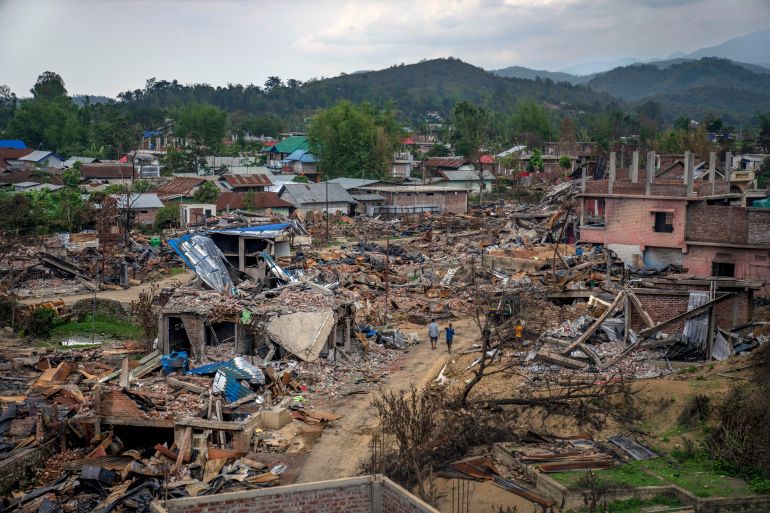
At least 150 people have been killed since May in ethnic violence in Manipur, a remote state in northeast India with a history of tensions between tribal groups.
Soldiers were rushed in from other parts of the country to contain the violence, and months later a curfew and internet shutdown remain in force in most parts of the state.
Keep reading
list of 4 itemsIndia’s Modi to face no-confidence vote over Manipur violence
Outrage in India over video of Manipur women paraded naked, raped
Can Manipur ever trust India again?
Thousands of guns were stolen when the unrest began, and militia groups on both sides of the state’s ethnic divide are hunkering down for a protracted fight.
Prime Minister Narendra Modi this week faces a no-confidence motion in parliament over the violence, with the opposition accusing him of inaction.
A look at the origins of the conflict and its consequences:
Why did the latest violence start?
The dispute stems from animosity between Manipur’s Meitei majority and the Kuki-Zo, one of several tribal groups in the state that make up about 16 percent of its population.
The Meitei are predominantly Hindu and largely live in capital Imphal and the prosperous valley around it, while the mainly Christian Kuki-Zo usually live in scattered settlements in the state’s hills.
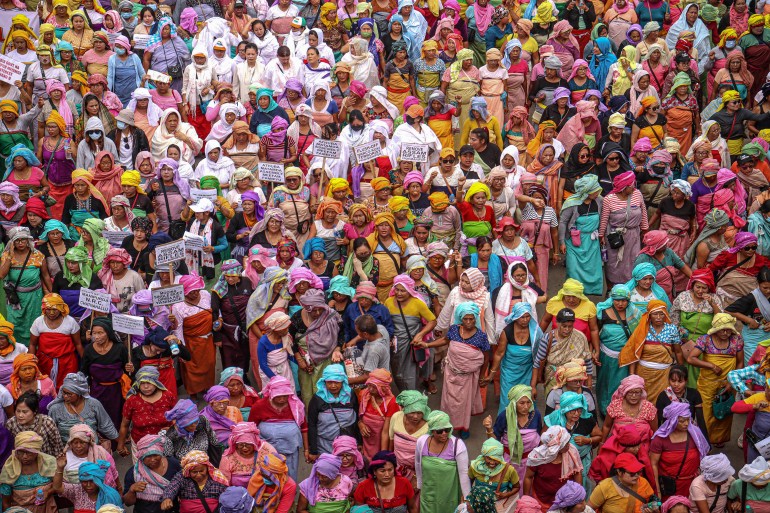
Longstanding tensions between the two communities have revolved around competition for land and public jobs, with rights activists accusing local leaders of exacerbating ethnic divisions for political gain.
Things came to a head in May over plans to recognise the Meitei as a Scheduled Tribe (ST) – a status already conferred upon the Kuki.
The ST status would grant Meiteis a form of affirmative action through guaranteed quotas of government jobs and college admissions.
Kuki-Zo groups staged protests over fears the plans could reduce their entitlements, with rallies quickly spiralling into violence.
Protesters set fire to vehicles and buildings, and Meitei mobs armed with guns and petrol cans then attacked Kuki-Zo settlements in the hills.
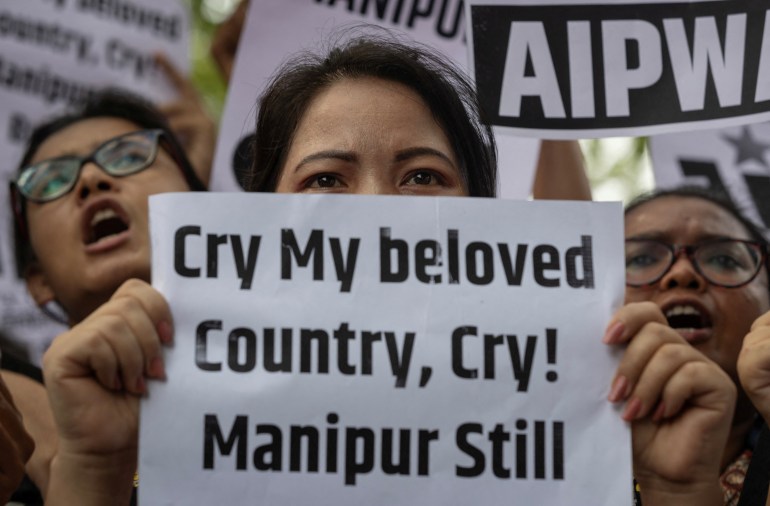
What has happened since?
Mobs looted police stations when the clashes began, with 3,000 weapons and 600,000 rounds of ammunition going missing according to the Press Trust of India news agency.
The state has fractured on ethnic lines, with rival Meitei and Kuki-Zo militias setting up blockades to keep out members of the opposing community.
Clashes have killed at least 150 people, though many in Manipur believe the number could be higher.
Some 60,000 people have been forced to flee their homes, taking shelter in relief centres or nearby states.
Reprisal attacks have seen the firebombing of homes and places of worship.
More than 220 churches and 17 Hindu temples had been destroyed by the end of July, according to a report by the India Today news magazine.
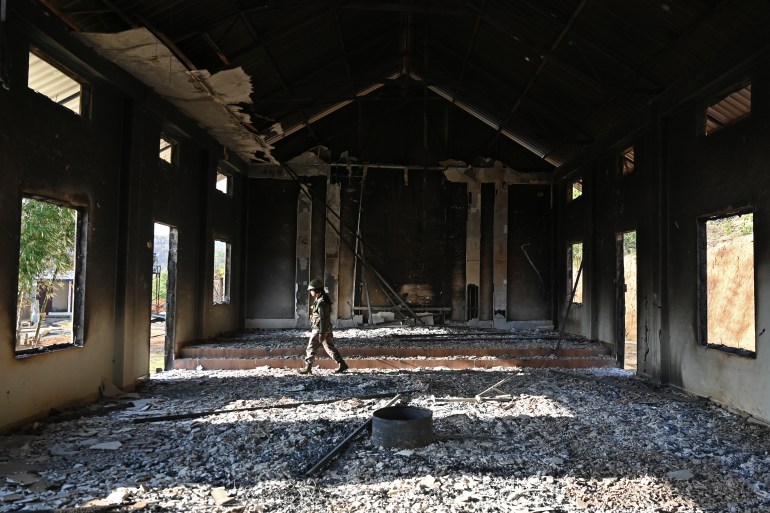
Has Manipur seen unrest before?
Manipur is one of the seven northeast Indian states – sandwiched between Bangladesh, China and Myanmar – that has long been a hotbed of separatism and a tinderbox of tensions between different ethnic groups.
An armed rebellion broke out against Indian rule in the late 1970s by Manipuri rebels who said the region had been largely neglected by New Delhi, with daily armed attacks on government facilities.
About 20 armed groups were active in Manipur during the peak of the rebellion, with more than 10,000 people losing their lives in the two decades to 2010.
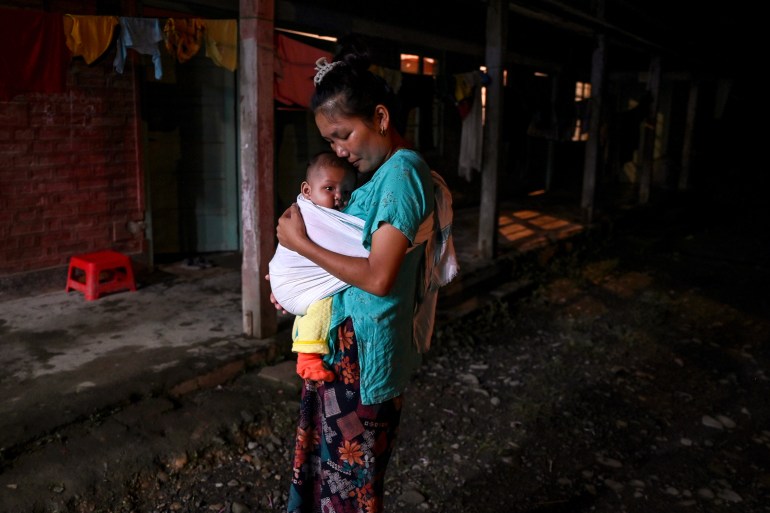
But the state had been relatively calm since the last major rebel attack in 2015, when an ambush on a military convoy killed about 20 soldiers.
The latest violence has revived calls among the Kuki-Zo to be granted a separate state administration.
This demand has been rejected outright by the Meitei, who make up more than half of the state’s 2.8 million population, according to India’s last census in 2011.
How has the government responded?
Sporadic violence has continued despite the federal government rushing in troops from other parts when the clashes began, as well as imposing a curfew and internet shutdown that both remain in force in many areas.
Indian Home Minister Amit Shah toured Manipur’s capital in June and demanded the return of weapons looted from police stations during the unrest.
He has also promised an “impartial investigation” into the violence.
Modi was criticised by opponents for not speaking about the conflict for more than two months after clashes began.
He broke his silence in July after the publication of a graphic video showing a baying mob parading two Kuki women naked, saying that the incident had filled his heart with “pain and anger”.
Human Rights Watch has accused state authorities in Manipur, led by Modi’s Bharatiya Janata Party (BJP), of facilitating the conflict with “divisive policies that promote Hindu majoritarianism”.
India’s parliament is debating a no-confidence motion against Modi this week over his government’s failure to rein in the conflict – a vote he is expected to easily survive.